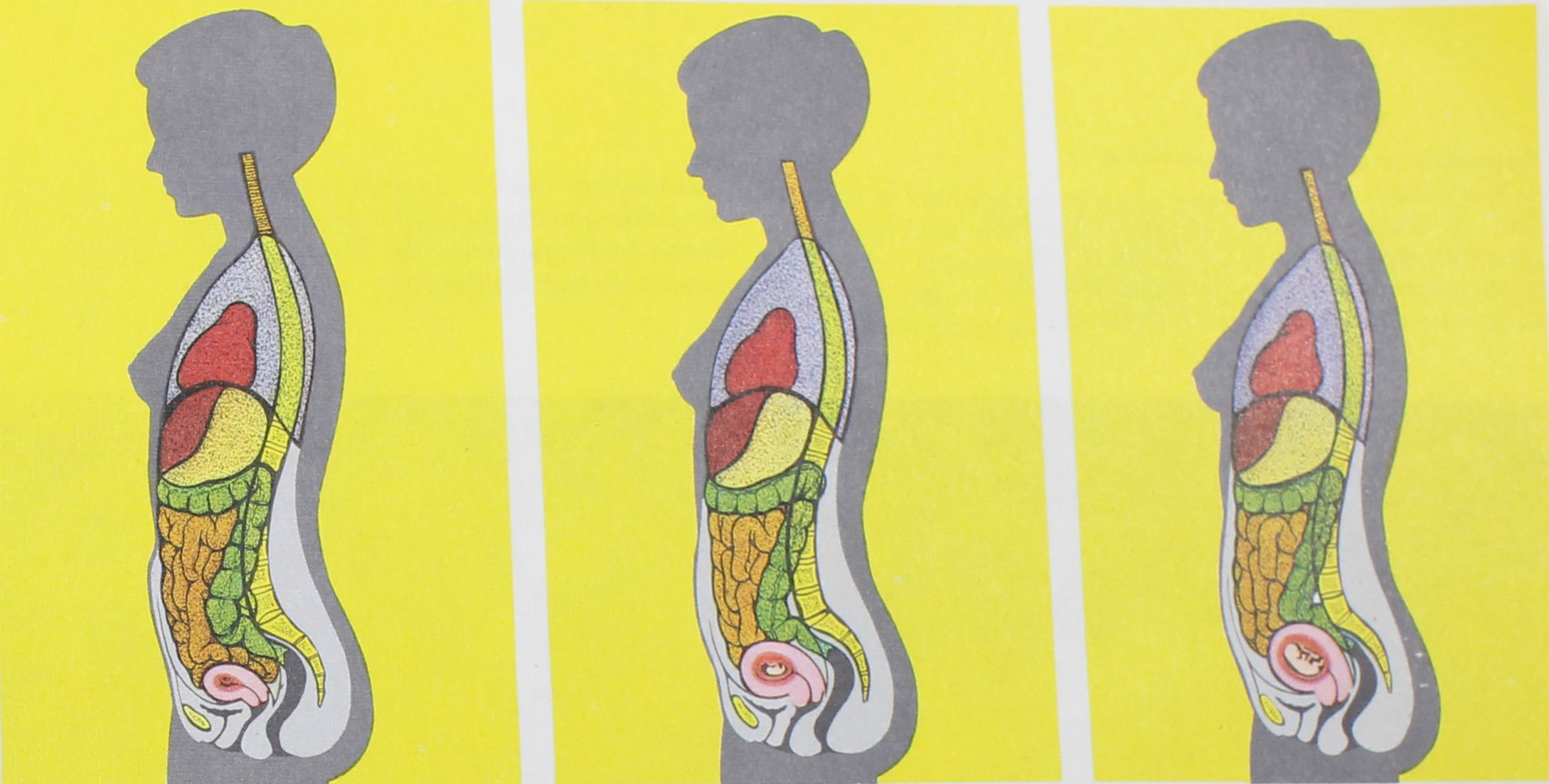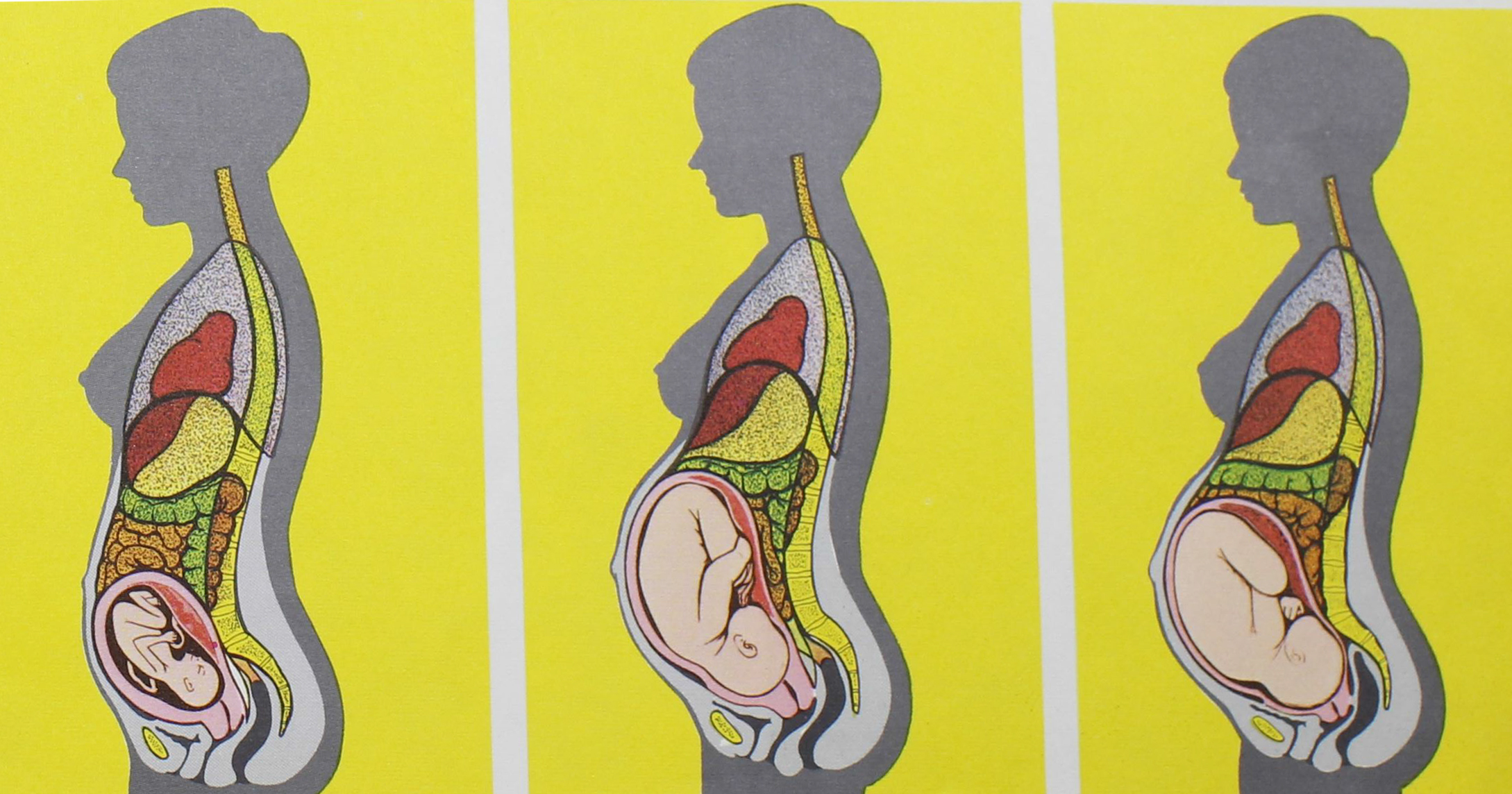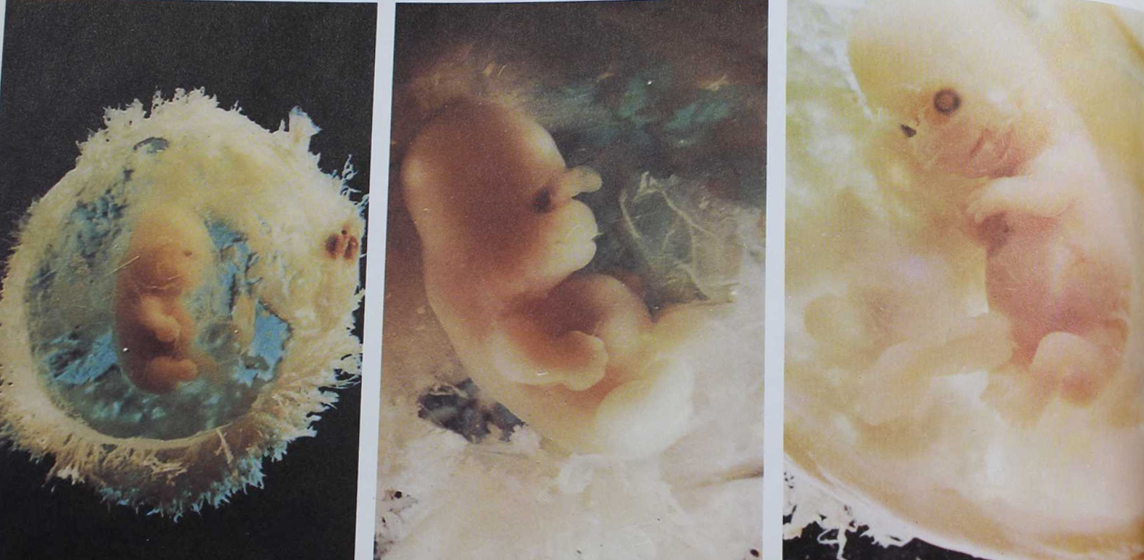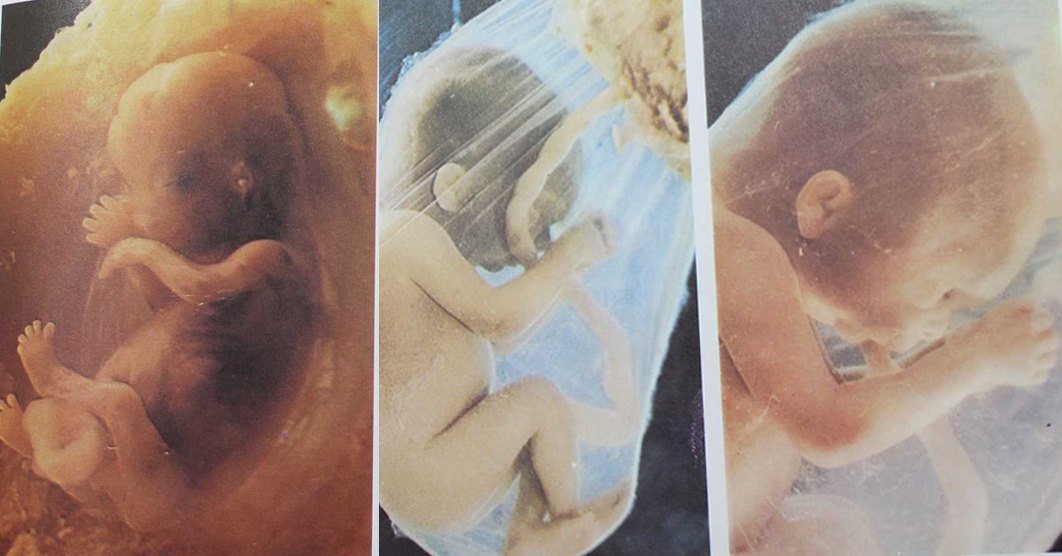Sexual Education Manual: Biological Information on Human Sexuality (1969)
Abstract
Published as part of a public outreach campaign organized by the Social Democrat-led Ministry of Health, the Sexual Education Manual aimed to clarify the diverse biological aspects of human sexuality. This chapter on pregnancy offers a month-by-month description of the development of an embryo into a baby (see illustrations).
Source
V. Pregnancy
Regular doctor’s visits are necessary during pregnancy.
The average duration of a pregnancy is 280 days (=10 pregnancy months at 28 days each). The estimated due date is easy to calculate. Starting from the first day of your last menstrual period, count back 3 months and then add 7 days. If a pregnancy ends in the first sixth months, then it is called a miscarriage. Babies born from the seventh month on are considered premature.
Changes in the uterus during the various months of pregnancy
At the end of the third month, the uterus is the size of a fist. In the sixth month, it reaches the height of the navel, and in the eighth month it reaches the bottom of the ribcage. Four weeks before the birth, it drops, shifting outward and downward by about 3 cm.
Schematic diagram of the muscle layer of the uterus
The muscle fibers of the uterus spiral around the uterus at an oblique angle; longitudinal and circular layers of muscle fiber [stretch to] accommodate the growing baby. During pregnancy, uterine muscle fibers grow to twenty times their normal length.
Nutrition
The baby is fed through the placenta. The umbilical cord connects the placenta and the fetus. It is 50-60 cm in length, long enough to ensure mobility in the womb. One vein and two arteries pass through the umbilical cord. As long as the baby is in the womb, the umbilical cord absorbs food and oxygen through the blood and returns waste products to the mother.
1st month of pregnancy
A missed menstrual period is usually the first sign of pregnancy. Basal body temperature measurements also provide clues: a pregnancy is suspected if there is no drop in basal body temperature. Various options are available to the doctor in the way of pregnancy testing.
By the end of the first month of pregnancy, the embryo already has a head, and the beginnings of the eyes, ears, mouth, and brain can be made out. At this point, the cardiovascular system consists of a 2 mm-long tube that contracts rhythmically every second. In the first four weeks, the embryo grows by a factor of fifty.
2nd month of pregnancy
After the seventh week, the heart already beats strongly. The brain, stomach, liver, and kidneys are already active, and fingers and toes start growing on the hands and feet; the eyelids shield the eyes, and the tongue and teeth develop inside of the mouth.
3rd month of pregnancy
The embryonic stage concludes at the end of the third month of pregnancy. This marks the beginning of the fetal stage, during which the baby grows mainly in terms of weight and length.
Fingers and toes are now equipped with nail beds; the eyelids remain closed for the next three months. The baby’s sex is now discernible. Ovaries and a uterus can already be seen in girls, testicles in boys. At this point, the baby can already grasp, make facial expressions, bend and stretch its arms and legs and move its head. The amniotic fluid facilitates fetal movement and protects the baby from injuries, blows, and other external impacts.
4th month of pregnancy
At this stage, the baby's heart pumps about 30 liters of blood through its vascular system every 24 hours and supplies nutrients to the rapidly growing organs.
5th month of pregnancy
By now, the baby’s movements are so vigorous that the mother can feel them. At 120-150 beats per minute, the baby’s heartbeat is clearly audible. Hair and eyelashes grow; fingernails and toenails slowly emerge from the nail beds.
6th month of pregnancy
Now that the baby takes up more and more space, the mother’s digestive organs become compressed. During this time, small pads of fat start to form under the baby's skin, and its veins can no longer be seen so easily. At the same time, the baby’s muscles grow, its hands can already grip something, and its whole body is covered in soft, downy hair.
7th month of pregnancy
The increased size and weight of the uterus causes the pregnant woman to shift her body weight. She tries to compensate for this by altering her posture, which in turn causes greater curvature of the lumbar spine.
If a baby is born in the seventh month, there is a chance of survival with medical intervention. -- Now its eyes are fully formed, and its eyelids can open and close. The baby's movements become more precise, and it can put its thumb in its mouth without difficulty.
8th month of pregnancy
The enlargement of the uterus and the compression of the digestive organs hinder the mother's freedom of movement. The mother provides the unborn baby with antibodies against certain communicable diseases. After birth, these antibodies will offer the baby limited protection until it is four months old.
9. Month of Pregnancy
The baby’s movements are stronger and livelier. The baby assumes the head position shown in the illustration and remains in this position until birth. The mother starts to experience some physical relief, as the uterus drops and tips forward.
10. Month of Pregnancy
The baby is now completely viable.
Overview of the Length and Weight of the Baby (Average Values)
|
Length |
Weight | |
|---|---|---|
|
1st month |
1 cm (1 x 1) |
- |
|
2nd month |
4 cm (2 x 2) |
11 g |
|
3rd month |
9 cm (3 x 3) |
40 g |
|
4th month |
16 cm (4 x 4) |
170 g |
|
5th month |
25 cm (5 x 5) |
500 g |
|
6th month |
30 cm (6 x 5) |
800 g |
|
7th month |
35 cm (7 x 5) |
1300 g |
|
8th month |
40 cm (8 x 5) |
2300 g |
|
9th month |
45 cm (9 x 5) |
2700 g |
|
10th month |
50 cm (10 x 5) |
3200 g |

Position of the uterine floor during the various months of pregnancy

Schematic diagram of the muscle layer of the uterus [Längsfaserschicht: longitudinal muscle fiber layer; Ringfaserschicht: circular muscle fiber layer; Gebärmutterband: uterine ligament; Eierstockband: ovarian ligament]

1st, 2nd, 3rd months of pregnancy

6th, 7th, 9th months of pregnancy
Development from Embryo to Fetus
|
Embryonic Stage |
Here, in the same embryo, one can see the first thickenings on the hand, from which the fingers will develop. The toes develop a bit later. |
This embryo is 7 weeks old and has already developed fingers and toes. Its ears are not yet in their final place, and its eyes are still without lids. |

|
Fetal stage |
The unborn baby is 5 months old and 25 cm long. He rests in the amniotic sac, which is filled with amniotic fluid and connected to the placenta by the umbilical cord. |
The same baby viewed from the other side: his head and body hair are visible. He appears to be sleeping but can already make himself felt with strong kicks. |

Source: Sexualkunde-Atlas: biologische Informationen zur Sexualität des Menschen. Commissioned by the Federal Ministry of Health, published by the Federal Center for Health Education, Cologne. Federal Center for Health Education [Bundeszentrale für Gesundheitliche Aufklärung or BzgA]: Opladen, pp. 22–25. Reproduced with permission by the Federal Center for Health Education.